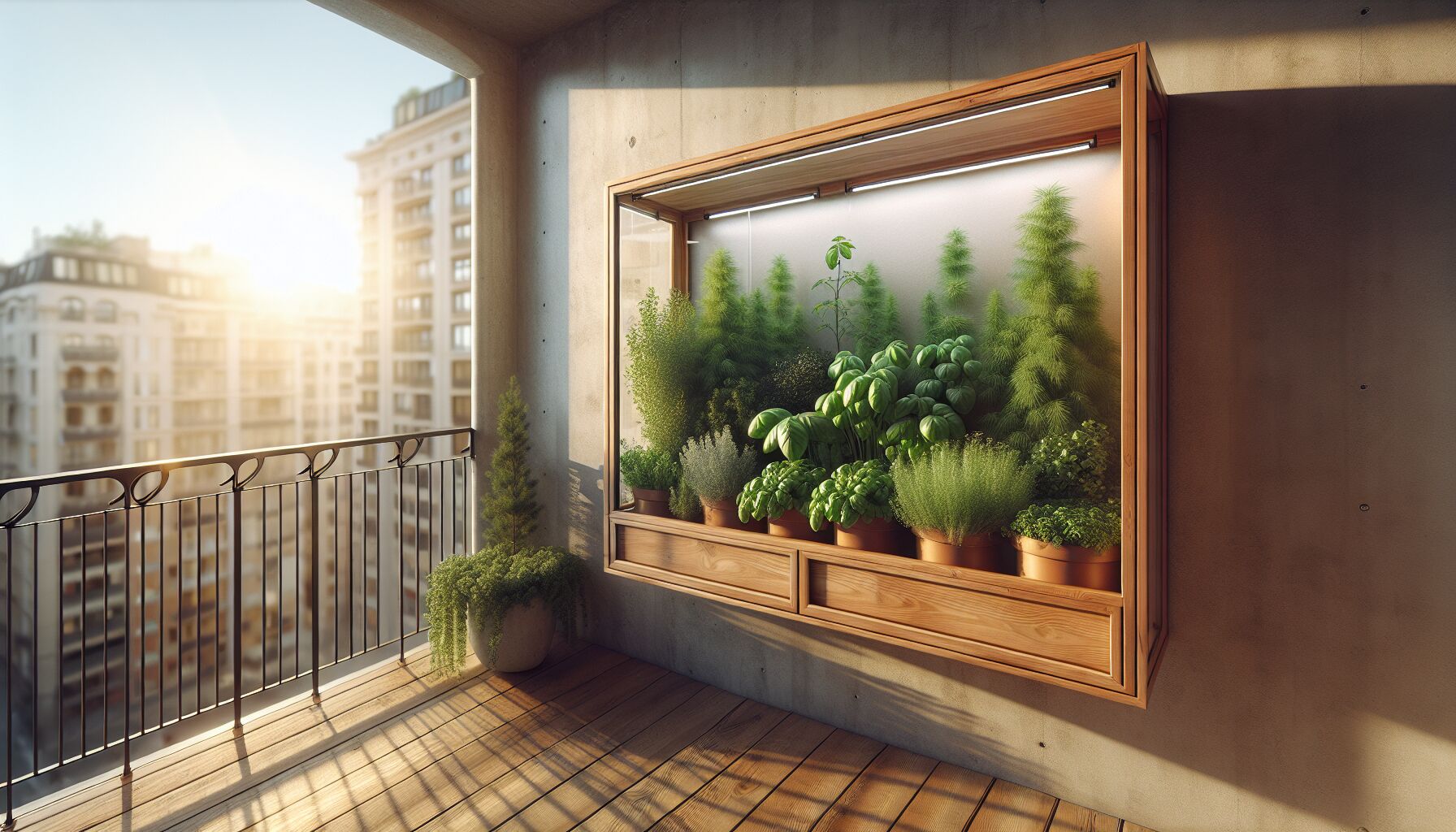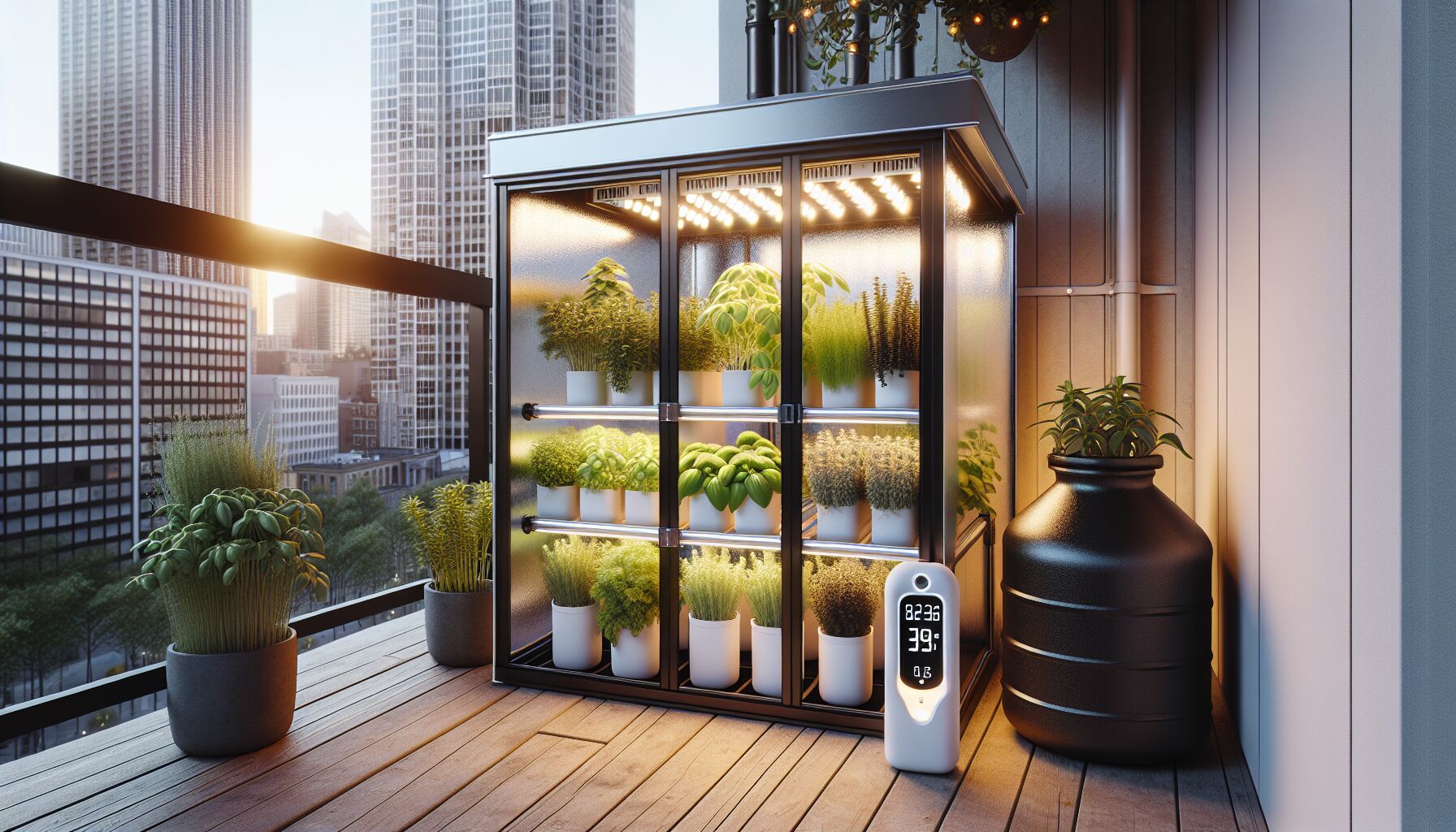 Not every structure fits every spirit — or every balcony. And picking the wrong type of greenhouse for your urban space is kind of like wearing heavy boots when what you really need are moccasins. Clunky, awkward, and oddly exhausting. Your balcony greenhouse should feel like an extension of your home and heartbeat, not a burden shoved into the corner of a concrete canyon. So how do you choose the right one?
Not every structure fits every spirit — or every balcony. And picking the wrong type of greenhouse for your urban space is kind of like wearing heavy boots when what you really need are moccasins. Clunky, awkward, and oddly exhausting. Your balcony greenhouse should feel like an extension of your home and heartbeat, not a burden shoved into the corner of a concrete canyon. So how do you choose the right one?
Let me explain.
You’ve got to start by facing the facts of your space. Take measurements — real ones. Don’t guess at how much room you have to play with. Grab a tape measure and get honest about square footage, sun direction, and wind exposure. If your balcony’s south-facing, you’ve got more sunlight to work with, which opens up the options. East-facing? Morning sun but cooler afternoons — great for leafy greens who don’t like scorching. And if your balcony’s shadowed by another building? You’ll need a structure that compensates for that, like one with built-in LED grow lighting or reflective panels.
Now, styles. You’ve got choices, but they aren’t all created equal — especially when sustainability, longevity, and ease of use come into play.
- Cold frames: These are essentially lidded boxes that sit low to the ground, ideal for greens, herbs, and starter trays. Great if your space is tight and your goals are modest. But don’t expect to overwinter tomatoes here.
- Mini walk-in greenhouses: Think zipper tents with plastic covers and wire racks inside. Affordable and easy to set up — but wind can be cruel if they’re not anchored right. Choose ones with PE (polyethylene) covers, which are more durable than PVC and far more earth-friendly.
- Wall-mounted greenhouses: These attach directly to a solid wall, turning vertical real estate into growing space. Excellent for heat retention and stability. They’re often overlooked, but in the context of indoor gardening on a city ledge? They’re a quiet secret.
- DIY upcycled setups: Salvaged windows, reclaimed wood, even commercial freezer doors — all can become micro-greenhouses with the right touch. Not just budget-friendly, but rich in story and intention. Plus, repairing instead of replacing? That’s sustainability in motion.
Sometimes folks think bigger is better. But with balcony gardening, restraint is wisdom. A snug, well-tuned system will feed your household more consistently than a sprawling setup that’s too much to manage. As Wendell Berry once said, “The care of the Earth is our most ancient and most worthy, and after all, our most pleasing responsibility.” Go with what you’ll love to maintain — not what just looks impressive.
Ventilation is non-negotiable. Even compact greenhouses need air movement to prevent fungal rot and overheating. Look for structures with zippered windows, top hatches, or panels that pop off easily. If you’re in a zone with high summer temps and strong sun, plan for a shade system — mesh cloth, bamboo blinds, or even repurposed linen sheets will do the job just fine.
Weight matters, too. Many city balconies have load limits that landlords rarely mention because, frankly, most people aren’t growing their own food out there. But you’re not “most people,” are you? Factor in the weight of the structure, soil, containers, and water. Lightweight aluminum frames are solid and weather-resistant. Wooden ones look gorgeous but need sealing and regular maintenance. If wood calls to you, cedar lasts longest and smells like something ancient and true after a good rain.
If you’re in a seasonal climate, think ahead. Will you disassemble the structure in winter, or need it to hold strong through snow and salt-laced wind? Is portability important — say, you’re renting and want to take your setup with you in a year? These practical questions carry spiritual weight, too. They ask us to consider permanence versus adaptability, rootedness versus movement. No small thing.
You might also want to look into products that are organically built or made by small-batch craftsmen. Brands like Bootstrap Farmer, Exaco, and Juwel tend to offer solid ecological ethics along with smart design. Avoid cheap box-store kits wrapped in brittle nylon — they break quicker than habits.
Even in the selection phase, there’s a pulse here — a dialogue with space, intent, and possibility. Greenhouses are not just shelters for plants; they’re containers for prayer, patience, and cycles. Choose the one your hands will enjoy building, your heart trusts to endure, and your life has room to nourish.
As you weigh your options, remind yourself gently: this is less about the frame or plastic cover… and more about what you’re creating room for. And who you’re becoming while you build it.
Maximizing limited space for plant growth
You’ve got your balcony greenhouse set up—beautiful. Now the real art begins: growing food in a space barely wider than your shoulders. If that feels daunting, remember—nature doesn’t rush, and neither should we. Working with limited square footage just means getting creative with positioning, layering, and timing. Think of your balcony like a tiny stage. Every actor, or in this case, plant, needs a role, a place in the light, and a rhythm to follow. And the script? That’s the seasons, your eating habits, and a little trial-and-error.
So how do you get nature to perform in a scaffolded corner of your apartment building?
Start by zoning your space with intention. Place your larger containers at the edges or corners—they anchor the visual and physical weight of the garden. Things like tomatoes, dwarf fruit trees, or a big bin of carrots take up more room, sure. But they also act like pillars. From there, go vertical with trellises, hanging pots, and stacked crates. String up peas, beans, or cucumbers on netting or chicken wire attached to the side rails. If you’re short on railing space, overhead setups using tension rods and macramé hangers can hold herbs or strawberries in burlap pouches.
Now, don’t just think up and down—think rotation. Succession planting lets you swap out crops as the seasons shift. Fast growers like radishes, baby lettuce, mustard greens, and cilantro can be seeded and eaten in under 30–40 days. While they’re coming up, start slow-growers in seed trays inside. Once the first crop finishes, tuck the next one in—like passing a baton in relay. That’s not just smart—it’s soul-satisfying. You’re learning to read the beat of your own food system.
Container size matters, but so does what goes into them. Soil depth determines which roots can stretch freely. Leafy greens are happy in 6 inches of soil, but peppers and eggplants need closer to 10 or 12 inches. And don’t overlook grow bags—they’re lightweight, breathable, and flexible to tuck into odd corners. Just make sure they sit on something that allows drainage without causing a mess. Wooden slat trays with old towels work. So do plastic dish trays from the thrift store. This is sustainability with hands in the dirt.
“He who plants a garden plants happiness,” said Chinese philosopher Confucius—quiet wisdom that still makes its way into the modern world, one parsley sprout at a time.
You’ll want to create microclimates within your greenhouse. That might sound like a luxury, but it’s simpler than it sounds. Just by clustering moisture-loving plants like basil or lettuce closer together and shielding them with taller crops, you mimic forest-edge conditions. Meanwhile, succulents or rosemary can sit by the draftier end or near a breeze path where airflow stays steady. Don’t hesitate to move things around every few weeks. Plants are more adaptable than we give them credit for. So are we.
Indoor gardening doesn’t mean isolation—it means intimacy. You notice more. A slight change in a leaf color. That curl in a stem reaching toward the light. And when you’re watching that closely, you begin catching things early—like pests, mold, or drought-stress. Hang a small mirror at the far end of your balcony to reflect light back and increase visibility without crowding the area. It helps with leaf health, foliage density, and—strangely—mood. Light is food for us too.
If you’re someone who wants to stretch productivity, try interplanting. Nest fast germinating herbs around slower growers. Plant garlic in corners—it repels aphids and adds scent to the space. Tuck calendula along the border—it attracts pollinators and repels certain beetles. Suddenly your space becomes multi-functional. Not just food-producing, but life-supporting. A little sanctuary that regenerates itself, and you, season through season.
Still, there’s room for simplicity. Nobody’s asking you to mimic permaculture on a balcony (though folks have tried). Just start with what your household eats the most. Cherry tomatoes, romaine, mint for tea—basic, nourishing plants that respond well to container life. If you’ve got a southern balcony with strong light, lean into that solar blessing. If your schedule’s tight, go for reliable workhorses like Swiss chard or green onions. Maximum output, minimum fuss.
And remember, your balcony greenhouse is more than a garden. It’s a statement about rhythm and resilience. One that whispers, “Yes—life can still flourish here.” That’s especially significant in cities where it’s easier to forget we’re part of an ecosystem and not just living on top of one.
There’s a quiet integrity in growing food where space says you can’t. It’s a contradiction tilted toward truth. Because with every seed, you reclaim a bit of independence. Not against the world, but within it.
And soon enough, that little space out there will stop feeling small—and start feeling like the most alive part of your home.
Maintaining climate and light control
 Let’s be honest — a greenhouse without climate control is just a fancy box. And when it’s perched on a city balcony, surrounded by fluctuating temperatures and scattered sunlight, that box needs brains, not just beauty. Maintaining the right temperature, humidity, and light in your balcony greenhouse isn’t about chasing perfection — it’s about cultivating consistency. Think of it as learning to keep rhythm with the weather rather than wrestling it. You’re not controlling nature; you’re dancing with it.
Let’s be honest — a greenhouse without climate control is just a fancy box. And when it’s perched on a city balcony, surrounded by fluctuating temperatures and scattered sunlight, that box needs brains, not just beauty. Maintaining the right temperature, humidity, and light in your balcony greenhouse isn’t about chasing perfection — it’s about cultivating consistency. Think of it as learning to keep rhythm with the weather rather than wrestling it. You’re not controlling nature; you’re dancing with it.
Start with the basics: how hot or cold it gets up there. City balconies can be deceptive — they tap into urban heat sinks, reflect glare off neighboring windows, and get surprise cold drafts funneled down high-rises. Keep a thermometer inside the structure, positioned at plant height, so you’re not just guessing. A cheap analog one does fine, but a digital hygrometer-thermometer combo with a memory function lets you track highs and lows through the day. Brands like ThermoPro or Govee offer simple, affordable models.
If your balcony greenhouse regularly hits over 85°F midday, especially in summer, you need to vent — literally. That could mean propping open zippered flaps, cracking the door, or installing a small battery-powered fan to move air. Stick it low down near the plant bases to pull cooler air in, and crack a vent at the top to release warm air out. That temperature differential creates a gentle draw — like how smoke leaves a tipi. You’re basically building lung function into your shelter.
Humidity brings its own set of challenges. Dry air can stress seedlings and prevent proper transpiration. On the flip side, too much humidity encourages fungal problems and weak stems. Strike the balance using shallow trays of water filled with stones — the surface evaporation adds moisture without soaking the air. Misting works too, but only in the morning — evening mist can cling overnight and breed mildew. Trust the timing.
Now, let’s talk light — the true currency of indoor gardening. Sunlight shifts seasonally and hourly, and city buildings often block or redirect it. Your goal is to supplement light when it’s lacking, not recreate the sun. Full-spectrum LED grow lights with a timer are ideal — set them for 12–14 hours during winter, especially in north-facing spots. The key isn’t blasting your plants with brightness; it’s mimicking dawn-to-dusk rhythm. A sunrise grow light like the Relassy 150W or Spider Farmer series lets you adjust the spectrum, which can help coax healthy growth without stretching stems thin.
If you don’t want to complicate things with tech, consider passive reflectors. Just adding a few sheets of mylar, old mirrors, or foil-lined cardboard panels behind your plants can bounce afternoon light into the shadows. That can reduce the need for artificial lights and helps insulate foliage on colder days. Remember, light isn’t just food — it’s guidance. Plants grow toward it instinctively. Let their posture show you where change is needed.
Winter brings special considerations — especially if you live in zones 5 through 7. Freezing nights can decimate tender roots, even inside the greenhouse. You might think foam insulation or greenhouse heaters are overkill, but when your basil droops like it saw a ghost, you’ll change your tune. Lightweight thermal blankets (like the ones used in emergency kits) can be hung inside walls or draped over shelves on cold nights. There’s quiet wisdom in layering — temperature, like water or breath, moves slowest when cushioned.
You can also use thermal mass to moderate temperature swings. A few painted black water jugs absorb sunlight during the day, then release heat slowly through the evening. Cheap, low-tech, and surprisingly effective. It’s like tucking a hot water bottle next to your seedlings. Small tricks with big impact.
“Nature does not hurry, yet everything is accomplished,” said Lao Tzu — and nowhere is that more visible than in the pace of plants responding to their environment.
There’s also a deeply subtle layer to consider: the energetic quality of space. Climate control isn’t just for the plants — it’s for you, too. Ever notice how a warm, light-filled space instantly shifts your mood? Gardening under grow lights does something profound — it tricks the brain slightly, yes — but it also provides connection and continuity in seasons where nature seems still. That’s not small. It’s equal parts agriculture and psychology.
Now, for the sustainability angle. Don’t fall into the trap of systems that overconsume. Avoid energy-draining heating pads or harsh halogen lights that do more damage than good. LED tech and passive climate moderation are your allies. Stick with small-scale solutions that honor your space, wallet, and the larger eco-circle. Compostable seedling trays, solar-powered fans, reclaimed materials — these aren’t gimmicks. They’re choices that build character right alongside cucumbers.
In fact, working within limits — tight quarters, shaded balconies, erratic temps — creates wisdom fast. You start noticing airflow patterns. Where condensation pools. How your own stress shows up in plant resilience. Balcony gardening, especially in a greenhouse, becomes more than food. It becomes feedback. You’re not just adjusting thermostats — you’re adjusting to a rhythm.
So you build slowly. You monitor light with intention. You move trays, tweak airflow, shift coverings like a caretaker, not a controller. And one day, midway through a grey January afternoon, you’ll walk out to that little glass box, lift a cover, and smell the faint iodine sweetness of parsley warmed by the afternoon sun. A reminder that stewardship is a quiet joy — and climate control, when done right, is less about domination and more about gentle attunement.
Because the truth is — sustainability starts right here. In how we regulate 10 square feet of soil and stem. Not through force, but rhythm. Not from gadgets, but from presence.
And your balcony greenhouse? It’s a temple of that presence — as practical as soil, and as sacred as breath.
 DS Haven In Light Of Things
DS Haven In Light Of Things






